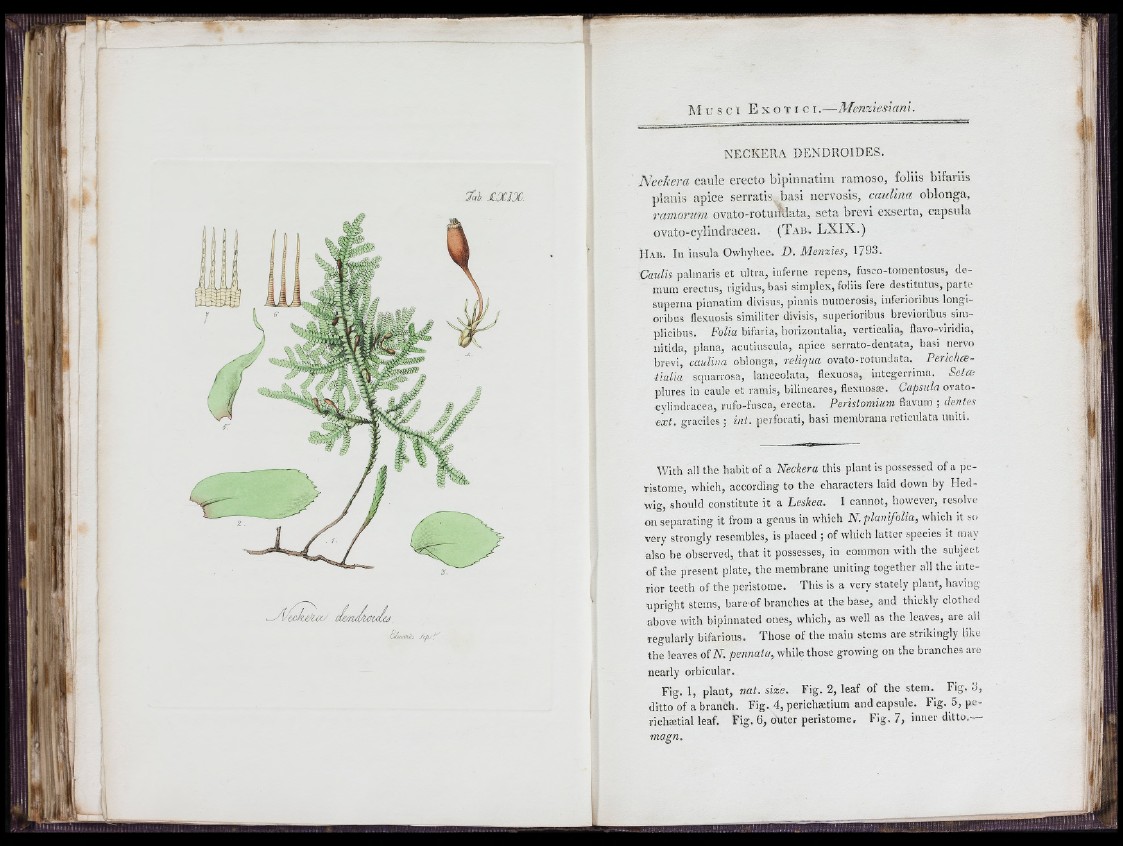
'■¡IH
Itili
I li'Il
I
%h. JMJX.
NECKERA DENDROIDES.
Neckera caule erecto bipinnatini ramoso, foliis bifariis
planis apice serratis basi nervosis, caldina oblonga,
ramorum ovato-rotinidata, seta brevi exserta, capsula
ovato-cylindracea. (Tab. LXIX.)
Hab. Ih insula Owhyhee. D. Menzies, 1793.
Caulis palmaris et ultra, inferne repens, fusco-tomentosus, demum
erectus, rigidus, basi simplex, foliis fere destitutus, parte
superna pinnatim divisus, pinnis numerosis, inferioribus longi-
oribiis flexuosis similiter divisis, superioribus brevioribus simpiicibus.
Folia bifaria, horizontalia, verticalia, flavo-viridia,
nitida, plana, acutiuscula, apice serrato-dentata, basi nervo
brevi, caldina obionga, reliqua ovato-rotimdnta. Perichcetialia
squarrosa, lanceolata, flexuosa, integerrima. Seta;
plures in caule et ramis, bilineares, flexuosæ. Capsula ovato-
cyliudracea, rufo-fusca, erecta. Peristomium flavum ; dentes
e x t. graciles; int. perforati, basi membrana reticulata uniti.
^yith all the habit of a Neckera this plant is possessed of a pe-
ïistome, vvhicli, according to the characters laid down by Hedwig,
should constitute it a Leskea. I cannot, however, resolve
on separating it from a genus in which N. planifolia, which it so
very strongly resembles, is placed ; of which latter species it may
also be observed, that it possesses, in common with tlie subject
of the present plate, the membrane uniting together all the interior
teeth of the peristome. This is a very stately plant, liaving
upright stems, bareof branches at the base, and thickly clothed
above with bipinnated ones, which, as well as the leaves, are all
regularly bifarious. Those of the main stems are strikingly like
the leaves of JV. pennaiu, while those growing on the branches are
nearly orbicular.
Fig. 1, plant, nat. size. Fig. 2, leaf of the stem.^ Fig. 3,
ditto of a branch. Fig. 4, perichætium and capsule. Fig. 5, perichætial
leaf. Fig. 6, outer peristome. Fig, 7, inner ditto.—
magn.